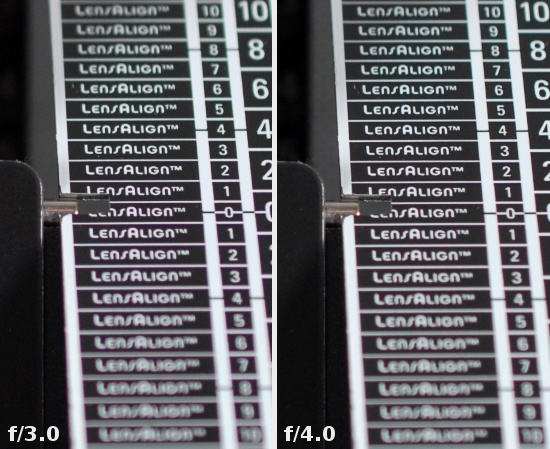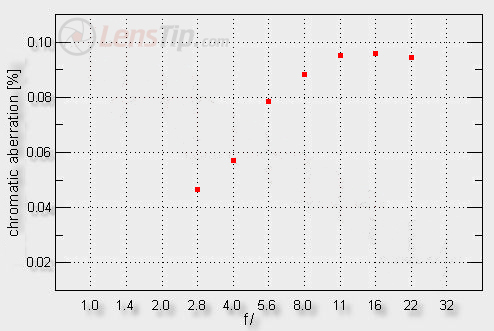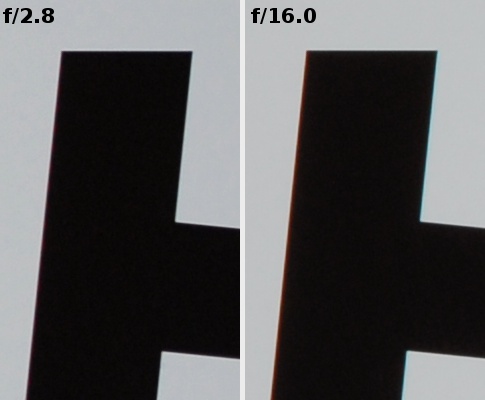Nikon Nikkor AF-S DX Micro 40 mm f/2.8G
5. Chromatic aberration
 |
When it comes to the lateral chromatic aberration it would be difficult to complain about anything. Near the maximum relative aperture it is low but then increases along with the stopping down and, after a significant stop, it reaches medium levels.
Please Support UsIf you enjoy our reviews and articles, and you want us to continue our work please, support our website by donating through PayPal. The funds are going to be used for paying our editorial team, renting servers, and equipping our testing studio; only that way we will be able to continue providing you interesting content for free. |
- - - - - - - - - - - - - - - - - - - - - - - - - - - - - - - - - - - - - - - - - - - - - - - -

The drawback of such aberration layout is the fact that the lens is nowhere free of it. At the maximum aperture, where the lateral aberration is low, we are bothered by its longitudinal variation. On stopping down the longitudinal chromatic aberration decreases but the lateral one increases sharply.
 |






